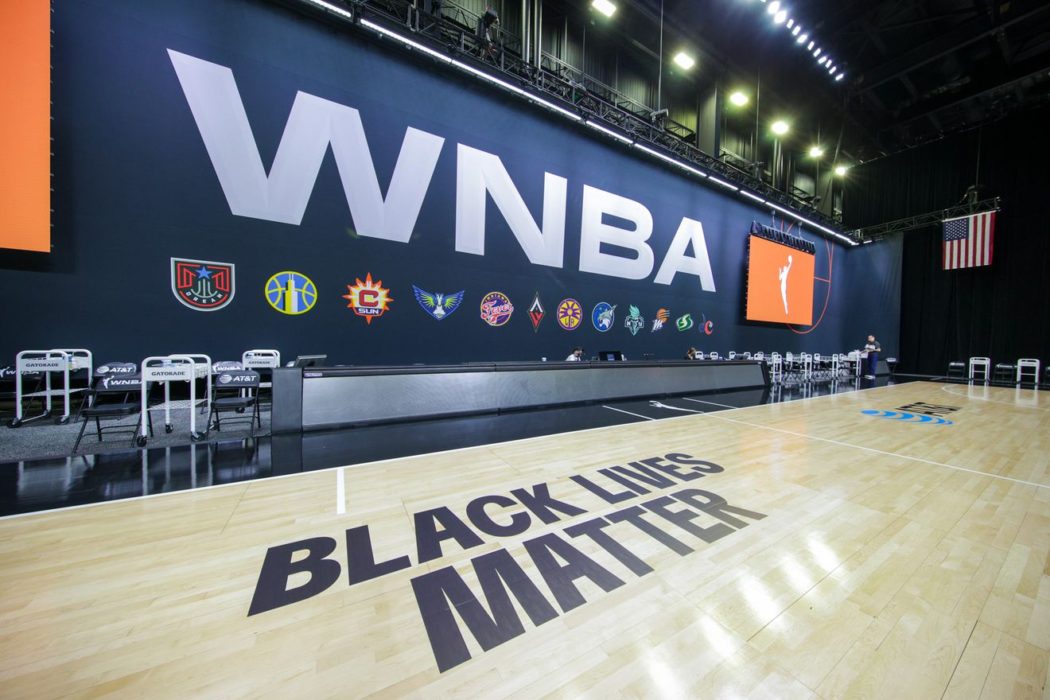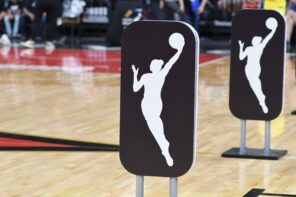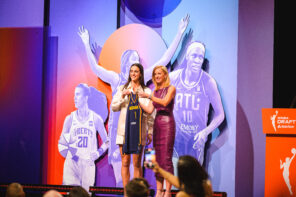The 2020 WNBA season has concluded with the Seattle Storm re-establishing itself as the premier team to beat in the league.
But – when the coronavirus pandemic began, it was very much up in the air if there would even be a WNBA season. We all had our doubts from the logistical challenges of overseas travel for several WNBA players, to the location of the wubble itself – Bradenton, Florida, which at the time was a major Covid-19 hotspot.
But if it is one thing that the pandemic has taught us more than anything else it is to never doubt women. Overwhelmingly, the best leadership there has been in response to the pandemic has been from women – whether they have been in government positions (such as New Zealand) or being in charge of sports leagues, women have stepped up to the plate and have shown the best leadership possible in the face of a pandemic.
Initially, we all had reason to believe that when the WNBA announced that there would be a season and that it would be in a singular location that was a Covid hotbed, we thought we would be hearing about positive tests on the regular. Instead, we only had a few positives towards the beginning of the season which led to immediate quarantine period for those who did test positive.
Then, there was the inconclusive tests that occurred that delayed the start of the WNBA semifinal series between the Storm and Minnesota Lynx, but that situation was quickly resolved and play eventually commenced between the Lynx and eventual champion Storm.
Brianna Turner of the Phoenix Mercury probably had the best take on how it was Covid vs. the wubble – with the wubble winning.
Maybe the White House should of taken notes from the NBA/ WNBA on how daily testing/ masks/ minimum exposure to the “outside” will virtually eliminate the chances of you contracting coronavirus. But yea I guess we should just “Stick to Sports” 🧐🤷🏽♀
— Brianna Turner (@_Breezy_Briii) October 5, 2020
What made the wubble’s success even more remarkable was that the players did not have to play. The WNBPA could have easily decided that the risks of catching Covid were too great. The NBA had already canceled the G-League season, so it was no guarantee they would go through with a WNBA season given the risks from a financial perspective.
The players of all 12 teams were the ones who decided they wanted to play – especially when promised their full salaries. Cathy Engelbert said at her State of the League address prior to the start of the WNBA Finals that the risks of there being no season were greater than playing in one singular venue for a few months. The linchpin of everything was the robust testing protocols players, coaches, staff and media had to agree to in ensuring a season could happen.
Those testing protocols worked. And in the coming months and years, we will more than likely hear much more first-hand perspectives about everything that made the wubble tick – from a player perspective and a league perspective.
And we as fans would have completely understood it if the players decided not to play. Yeah, we selfishly wanted to see a season – even if in one location or wubble, but ensuring that the long-term health of their careers (and lives) is intact is much more important than simply one season.
This, of course, did happen with a few players. Tina Charles didn’t play. Elena Delle Donne didn’t play. Liz Cambage didn’t play. Jonquel Jones didn’t play. Chiney Ogwumike didn’t play – and the fans fully understood why.
That’s what makes WNBA fans among the best in sports – care about the players as humans and not only as athletes – and understanding that these athletes understand that there is more to life than simply ball.
The confines of the wubble also allowed for the players to show league-wide displays of solidarity in support of social justice, particularly in response to the developments surrounding the George Floyd, Jacob Blake and Breonna Taylor cases. Those displays would still happen if a season were being contested under typical circumstances with teams traveling to home arenas, but there was something particularly powerful about virtually every player in the league in one setting in solidarity with the message of Black Lives Matter.
There was a reason why “Black Lives Matter” was on both courts at the wubble. There was a reason why every player in the league wore the name of Breonna Taylor on the backs of their jerseys. There was a reason why WNBA players wore shirts in support of Raphael Warnock, who is running for the United States Senate out of Georgia after Kelly Loeffler, co-owner of the Atlanta Dream, revealed herself as an unapologetic opponent of the Black Lives Matter message.
The WNBA wanted to make sure its consistently progressive message did not get lost in the sea of scintillating basketball we saw. That it did not because WNBA players have proven themselves to be about the social justice life even when they are away from the hardwood. More than likely, the remaining WNBA players who have not taken their talents to their overseas teams will continue to push the importance of voting in this year’s election as we inch closer to said election which will conclude on November 3rd.
There is a reason why the league postponed itself for a few days in the wake of the shooting of Jacob Blake by police in Kenosha, Wisconsin. Players had no problem to put the basketballs away if it meant bringing a greater spotlight on an issue that continues to be a stain on the USA to this day – police brutality and how Black people are unfairly treated by police.
And for all of the chatter that being too “woke” will actually drive fans away, what detractors do not understand is that there is a segment of the overall population that could be drawn further into the WNBA because of its progressive message.
Approximately 90% of the league is Black women and the players want viewers and fans to understand to see its talent not only as great athletes but as Black women. They understand that even when their time comes to put their jerseys and basketballs away for good that they will still be Black women – and strong Black women at that.
From continuing to push for equality to evading health issues, the WNBA’s 2020 season – the 24th in league history, could be one of its most memorable in history. And it is a testament that when we “Bet on Women,” as the WNBPA pushed hard for in the CBA talks with the league, great things can and will happen.
With the 2020 season in the books, let’s hope that we can beat this virus in 2021 and get back to playing in the 12 home arenas that comprise the WNBA. The next step in doing so will hopefully occur on November 3rd.
Hi, this is your friendly neighborhood 4x WNBA Champion reminding you to register to vote!
Register here ⬇️️https://t.co/YBC3Hr8i1W pic.twitter.com/WjYkYxLSdY
— WNBA Champs (@seattlestorm) October 7, 2020
LESS. THAN. 30. DAYS. Absentee. Early-vote. Mail-ins. Election Day.
VOTE.




